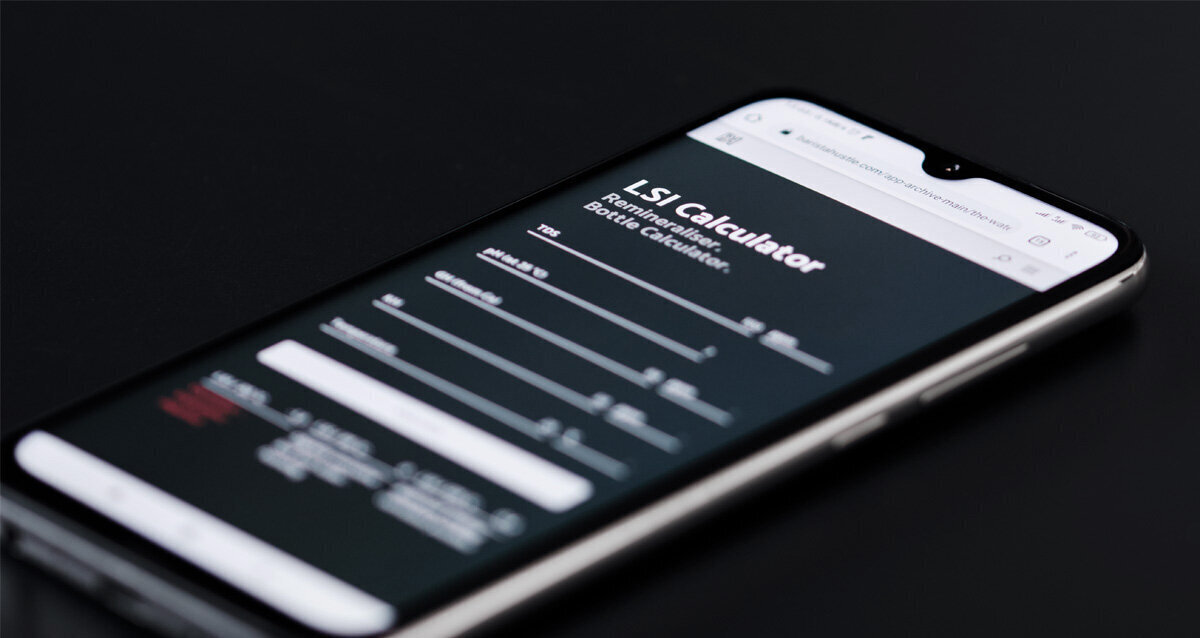
The Water Calculator
BH Unlimited Update, Apr. 25th, 2021.
Ask anyone and they’ll tell you building apps ain’t easy. But after making do with embedded spreadsheets for a while now, and given more and more demand from our readers to have a robust and precise way to manage limescale and corrosion, we decided it was time to make a water calculator for baristas. When we say it’s for baristas, we mean it's not just about maintaining your equipment and increasing the lifespan of expensive brewing equipment (though that is vital); it’s also about taste and flavour. This new app will help you manage remineralisation in as simple a way as we possibly can. Here it is and big thanks to BH researcher and writer Tom Hopkinson, and art director Jacob Thue who between them must have sent over 1000 whatsapp messages with lines of code, bringing this little app into existence.
The heart of this app is not new — the equations it is based on date back to 1936 after the work of Professor W. F. Langelier of the University of California, Berkeley, produced a research paper describing a new method for calculating the pH at which water becomes saturated with calcium carbonate . The Langelier Saturation Index (LSI), as it came to be known, expresses the difference between the actual pH of a sample of water and the pH it would have if it were saturated in calcium carbonate. BH Unlimited subscribers can head in here to The Water Course and learn all about Langelier. But to briefly summarise, if you know the pH, KH, GH, and TDS of your water, you’ll be able to punch those numbers into the app, and obtain a prediction of whether your water will cause rust or corrosion. It’s a free app which will save you time and money — please enjoy.
TWO NEW COURSES!
Introducing: The Espresso Machine - Online Course and Certification. This week we have a perfect storm of coffee education coming your way. By pure chance, we finished the Immersion and Coffee Buyer’s Guide to Guatemala courses in the same week. That means, we’re able to launch the first updates for The Espresso Machine and The Coffee Buyer’s Guide to Brazil right now. Exciting times!
We have wanted to write The Espresso Machine course for ages, but we needed to produce a bunch of wholesome vocational courses first to ensure our readers had a firm foundation of coffee knowledge and barista techniques behind them. But now that we’re onto our 15th course, it’s time for a little indulgence. We’re now diving into the history, form and function of the tech and design which we all love.
We have had a great time over the last two weeks diving into the history of coffee makers that use steam pressure from the nineteenth century. This also gave us a long awaited excuse to purchase an office-copy of this truly magnificent reference book: Coffee Makers: Macchina Da Caffe by Enrico Maltoni and Mauro Carli. We can say, this book is enormous. It literally weighs over 4.1 kg. And the design work is gorgeous. It’s in Italian and English on alternate pages, and is replete with “2700 images, 2080 technical descriptions and countless texts split into various historical periods. This book features all the different kinds of coffee makers produced to date, photographed in the homes of collectors from all over the world.”
Introducing: The Coffee Buyer’s Guide to Brazil. Welcome to the second in our series of Buyer’s Guides. This new course will be published in episodes over the next few months. Brazil is the most influential coffee producing country, not just in terms of its history of research and innovation, but also financially. The success or failure of the Brazilian coffee harvest has a knock-on effect to global financial markets. You know the saying, coined by meteorology professor Edward Lorenz , “when a butterfly flaps its wings in Brazil, it can cause a tornado in Texas…”? Well, it's just like that with Brazilian coffee.
This course will explain what you can expect from growing regions, and plant varieties; from typical flavour profiles and seasonality to modern grading standards and roasting characteristics. The course will examine the history of human exploitation in Brazil — the effects of colonisation and slavery. We will look into industrial coffee farming, whilst also talking to the many innovators who are helping to revolutionise sustainable coffee production in Brazil.
Quick Links:
A couple of nice research papers by Professor Jonathan Morris here: Why Espresso ? And The Cappuccino Conquests .
The Espresso Machine
History, Form, and Function
EM 0.01 • What is an Espresso Machine?
EM 0.02 • Angelo Moriondo
The Coffee Buyer’s Guide to Brazil
CBGB Prologue:
CBGB 0.01 • About This Course
CBGB 0.02 • Introduction
As always, we're just an email away if you have any queries! Have great weekends and we look forward to seeing you next time.
To the Boundaries of Coffee,
Team BH